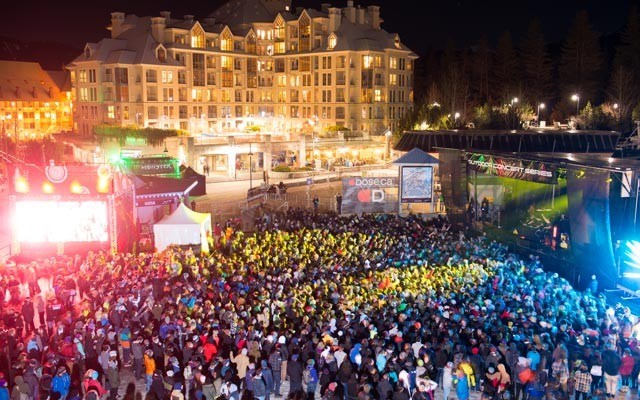With Easter in the rear-view mirror, an amazing Whistler Cup feted and done, you can feel the resort-wide sigh of relief as we get ready to bid farewell to winter 2014/15.
And what a winter it was — a season that tested the resiliency of the community and one of our biggest partners, Whistler Blackcomb.
By all accounts the ski product, while not up to what "locals" yearn for, and usually enjoy, was one of the best around. Many local mountains battled the unseasonably warm weather and lost, closing early, haemorrhaging money and releasing workers.
And B.C. wasn't alone in its weather woes. California ski resorts, devastated by drought, had their worst winter ever – which resulted in another strong year for Colorado according to the Denver Post.
The U.S. newspaper reported that Colorado Ski Country — the trade group that represents 21 of the state's 25 ski areas, reported visitation had climbed 3.7 per cent in the first two months of 2015, compared to the same period last season. Visitation for the season — from opening day through February — was up 1.9 per cent over the 2013-14 season, which ranked as a record with 12.6 million skier visits.
That's not to say the area didn't suffer as well from poor late season weather, with some resorts closing early.
In many cases what saved ski operations was snow-making technology.
Just last week, WB mountain operations manager Doug MacFarlane told Pique, "With the advent of today's technology, whether it's winch cats, the snowmaking technology, the experience of our groomers, snowmakers and operations team, it has really made this season what it is."
"If we experienced this winter in the early '80s, there's no way we'd be open."
Between Nov. 1 and March 1 this ski season, Whistler Blackcomb saw only 470 centimetres of snow, below the 547 that had fallen by this time in 2014, which was itself an historically low snow year. Whistler Blackcomb's average annual snowfall, based on the previous 10 years of data, is 1,164cm.
There was no hiding in this day and age of social media — everyone who came to ski had a realistic notion of what was on offer — but still they came, though in lower numbers than in big snow years.
This passion to enjoy snow sports continues to drive the industry but the face of it is changing. According to reports from the Canada West Ski Area Association the number of downhill users is stagnant, so the challenge is how to keep those users coming back, grow the sports at the bottom end by introducing new users to it and keep the resort alive during the rest of the year.
Whistler is in and of itself a business now, and one that has become increasingly important to B.C. as a whole — why else would the province be investing time and resources into formulating a response to climate change for ski resorts as reported in Pique a few weeks ago?
With B.C. ski resorts providing a livelihood for 18,823 people ($573 million in wages), and bringing in over $900 million in real GDP annually — that's about nine per cent of total tourism revenue in B.C., according to Destination B.C. — the province must plan long-term for the industry. Whistler alone contributes $428 million in tax revenue per year to the Resort Municipality of Whistler, and the federal and provincial governments. It is responsible for an estimated 22.5 per cent of the entire annual tourism export revenue of B.C.
But underneath all the data and analysis that keeps a ski resort alive and thriving is an unrelenting passion for the mountains by those of us who live and breathe this reality twelve months of the year.
And at no time during the year does Whistler feel more like its true self than during the World Ski and Snowboard Festival. You will read plenty about the "little festival that could" in this week's paper as we celebrate two decades of its existence (hats off to its founders and to the festival's "steady-as-she-goes" navigator Sue Eckersley).
It's a time to rekindle our love of our mountains, this corridor, and kick back and relax in our hometown.
Recharged — and well fed, thanks to all the restaurant spring-menu specials we are about to enjoy — we can start to imagine what needs to be focused on to have continued success.
How can the WSSF continue to evolve so that it remains relevant and maintains its not-to-miss event status? How does a resort, based on the "business" of snow sports offer, not only a family-friendly, easy-to-use, all-amenities-available experience, but also an experience that goes back to the roots of snow sports.
At its roots skiing is about getting out in nature, it's about speed, adrenalin, it's about being away from "it all." It's no accident that backcountry touring is the fastest area of growth in the industry. So how can the community continue to support this, so that those looking for the "resort-style" vacation get what they want, and those looking for a more authentic experience flock to Whistler too?
Grab a table at Skier's Plaza, and start talking Whistler — and enjoy another great festival. Party in April and sleep in May!




